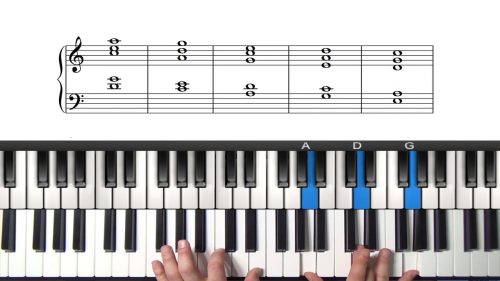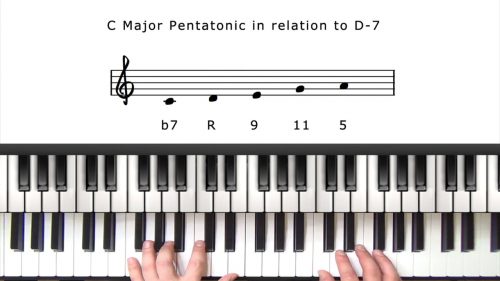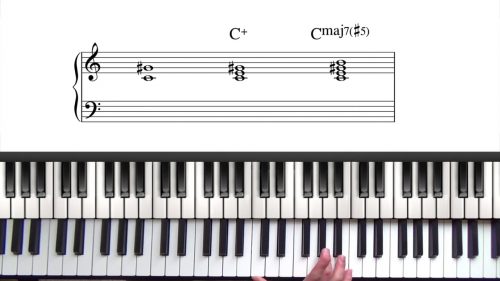Power Chords
In this 5 Minute Masterclass we are going to talk about the concept of ‘Power Chords’.
First let’s define the concept of power chords. This concept is often known in the rock guitar world because it’s a chord that you can play with a distorted guitar to achieve a very big sound.
Chord Tone Triads
These types of voicings are also known as ‘chord tone triads’. Chord tone triads are voicings that do not contain the 3rd instead we have the notes R-4-5, R-2-5, and we can alternate the order to arrange these notes into a stack of perfect 4th intervals for example 2-5-R.
Every time we have 3 notes with a 4th interval in between them, we have a power chord and furthermore, these are great voicings to use in the left hand on the piano.
The Sound Of McCoy Tyner
If you have every listened to the jazz musician McCoy Tyner, he made a trademark of the extensive use of 4th-based voicings in his left hand.
This was during the 1970s – an era when jazz musicians were utilising the suspended 4th chords in their playing.
Multiple Applications Of The Power Chord
We will now explore how the power chord can be used for a whole selection of different chord types and qualities – not just suspended chords. This type of intervalic stack can be applied to:
- Major chords
- Minor chords
- Dominant chords
Finally we will improvise over the form of Autumn Leaves using these chords in our left hand to create harmonically-ambiguous and angular-sounding voicings that propel the music forwards.
Lesson Downloads
-
Power Chords Lesson Notation File Type: pdf
-
“Autumn Leaves” Chord Chart F Major File Type: pdf
Practice Tips
-
Use this approach to create chord voicings that are melodically active and to make our accompaniments 'sing'.
-
Apply this to major, minor, and dominant chords.
-
Experiment with these voicings in your right hand to generate interesting ‘chord melodies’ and also in the left hand to create angular-sounding comping voicings.
- Superimpose these voicings on top of each other as demonstrated to create even bigger, more harmonically complex voicings.





